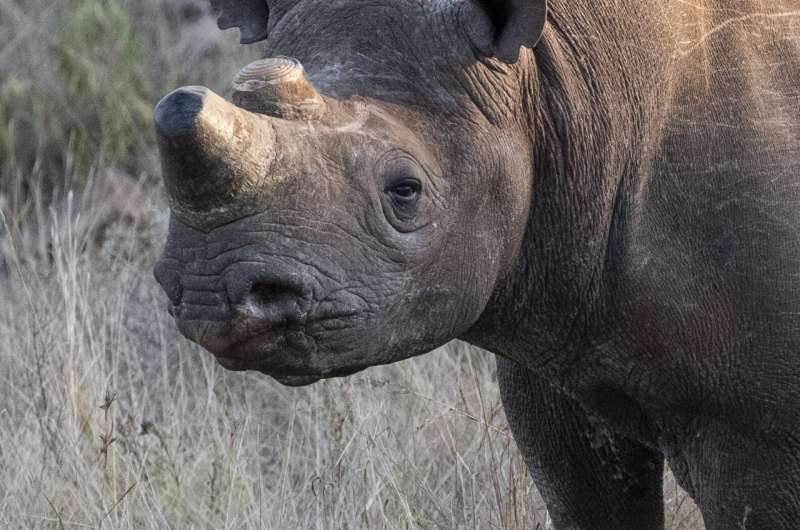June 13, 2023 report
This article has been reviewed according to Science X's editorial process and policies. Editors have highlighted the following attributes while ensuring the content's credibility:
fact-checked
peer-reviewed publication
trusted source
proofread
The social impact of removing horns from wild rhinos to protect them from poachers

A team of biologists and game preservationists from the Université of Neuchâtel, working with a large number of colleagues affiliated with multiple institutions in South Africa, has found that removing horns from black rhinos to protect them from poachers may have social implications for the rhinos. In their study, reported in Proceedings of the National Academy of Sciences, the group studied black rhino populations before and after horn removal to learn more about the impact removal has on them.
Prior research has shown that rhinoceroses are under threat by poachers that kill them to illegally obtain their horns, which are a popular commodity in many Asian countries. In this new effort, the research team was focused on one of the two species of rhinos that live in Africa, the black rhino. The other species is the white rhino, and both are endangered.
There are currently approximately 22,100 white rhinos and 6,200 black rhinos in Africa. Because of the threats both face, both have been given protected status. Unfortunately, despite armed rangers watching over them, both have suffered from population declines over the years. To prevent further losses, animal management authorities have authorized park administrators to remove the horns of many of the rhinos, eliminating the motive for poaching. Such removals have proven to be effective—poaching has ground to a halt under the programs. However, these programs are not a simple solution—removing horns safely is costly and puts workers and rhinos at risk of harm. Also, the horns grow back, and must be removed every 18 to 24 months.
Less well understood is the impact on the rhinos after horn removal. To learn more, the researchers in this new effort studied the habits of black rhinos in the areas in which they roam. The team started by making maps of rhino range for the Manyoni Private Game Reserve in South Africa. They used data from sightings made before a dehorning project began in 2016 and then for sightings made over the subsequent years.
They note that they were able to map the range for individual black rhinos through unique ear notches made by game managers. They found that after loss of a horn, male rhinos greatly reduced their range—some lost up to 80% of their territory. For some females, the team reports, the reduced range was even greater. The group repeated their work in nine other game reserves using 15 years of data-gathering and found similar results.
The researchers also found that removal of horns made the black rhinos less social with one another—instead of interacting, they would intentionally avoid one another. They conclude that horn removal may by be an indirect form of domestication.
More information: Vanessa Duthé et al, Reductions in home-range size and social interactions among dehorned black rhinoceroses ( Diceros bicornis ), Proceedings of the National Academy of Sciences (2023). DOI: 10.1073/pnas.2301727120
Journal information: Proceedings of the National Academy of Sciences
© 2023 Science X Network


















